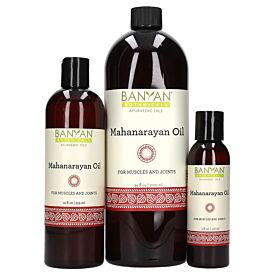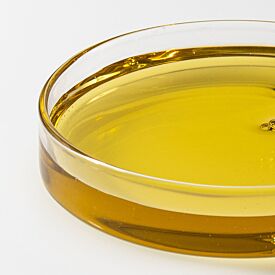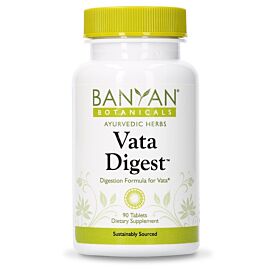A Vata-Balancing Approach to Fitness
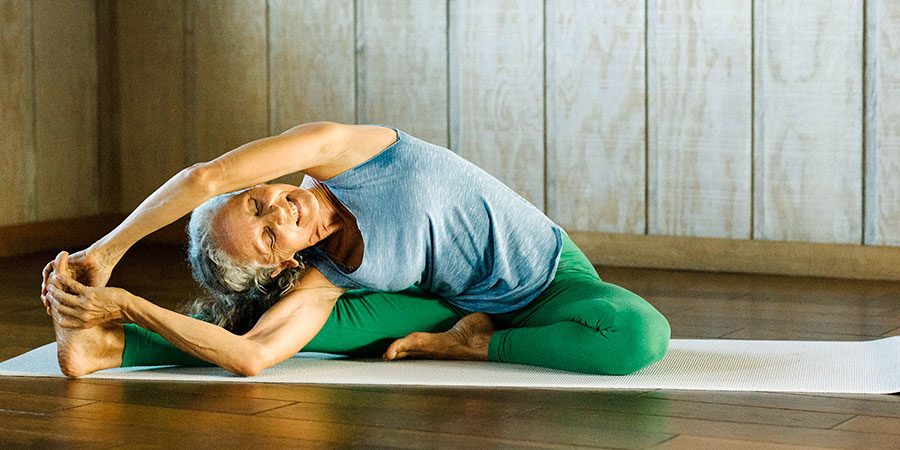
Vata is the most delicate of the doshas, the most easily aggravated, and has the most limited reserves of stamina. Qualitatively, vata is light, cold, dry, rough, mobile, subtle, and clear, which means that vata dosha has a great deal in common with exercise.
In this article:
- Vata and Exercise: A Qualitative Comparison
- How to Balance Vata with Exercise
- Additional Practices to Support Your Body
- Embrace What’s Right for You
If like increases like, this means that exercise is likely to aggravate vata—especially when one has a vata-predominant constitution or is experiencing a vata imbalance. So what’s a person to do? Stop exercising altogether? Absolutely not!
This means learning to pay attention to the various qualities that we can bring into our fitness routines and our lives—and learning to favor those that will promote balance.
Vata and Exercise: A Qualitative Comparison
| Qualities of Vata | Qualities of Exercise | Balancing Qualities |
| Air + Ether | Air + Fire | Earth + Water |
| Dry | Dry | Oily |
| Light | Light | Heavy (Grounding) |
| Mobile | Mobile | Stable |
| Subtle | Subtle | Gross |
| Clear | Clear | Substantive |
| Cold | Hot | N/A |
| Rough | Depends | Smooth |
How to Balance Vata with Exercise
In general, a vata-balancing approach to physical activity should be gentle, stabilizing, and guard against over-exertion.
For vata, exercising during the kapha times of day (6–10 a.m. and p.m.) is especially important because the atmospheric kapha helps buffer vata’s delicate nature. Movements should be grounding, slow, intentional, and emphasize stretching, strength-building, and fluidity (think smooth movements).
Focus on bringing as many of the following influences into your workouts as possible:
Groundedness. Make a conscious effort to develop a connection with the earth element. Because of its inherently grounding nature, the earth can be tremendously supportive as you exercise.
Activities that help us connect with the earth include:
- Lying down—either on a firm floor or (when weather permits) outside, directly on the earth.
- Placing the feet purposefully on the floor (or ground, when outdoors) and directing your full attention toward the connection between the feet and the earth.
- Exercising outdoors and in nature, and specifically inviting your senses to fully receive the natural world around you.
- Always practicing yoga barefooted.
- Embrace standing, balancing, and supine poses in your yoga practice to purposefully connect with the earth and close your practice with a lengthy Savasana (Corpse Pose).
A Slow Sense of Purpose. While vata certainly benefits from forms of exercise that are literally slow and filled with mindfulness (things like restorative yoga, tai chi, or chi gong), this energy can be cultivated in more physically intense activities as well.
Simply be conscious of slowing your thoughts and choose an intention. Invite your workout to ground your physical body, release stress and anxious feelings, and bolster health, rejuvenation, and balance in every area of your life.
Fluidity. Vata has a strong tendency to constrict or tighten. Bringing a smooth fluidity to your movements is far more supportive of vata tendencies than excessive tension, repetition, or pounding.
For example, tai chi and swimming are far more fluid and vata-balancing forms of exercise than long-distance running.
In any activity, try using the breath to create a sense of freedom throughout the body and explore alternative ways of moving that break your entrained patterns. (The yoga pose Cat-Cow illustrates beautifully how this might be accomplished.)
Flexibility. Much like fluidity, cultivating flexibility can help release unnecessary tension or constriction in the body. Be sure to stretch before and after your workouts to prevent undue tightening or contraction. And use the breath to encourage the release of any unnecessary tension.
Strength. When vata is high, muscle tone and strength are easily diminished. Carving out time for strength-building activities (done in a vata-balancing way) helps counter vata’s tendency toward depletion and preserve healthy muscle tissue.
Rest and Rejuvenation. Vata is also profoundly supported by balancing periods of activity with adequate rest and recovery.
If you are a committed athlete, consider taking a day off between your more intense workouts or alternating them with more gentle activities.
Also, in conjunction with adapting how you exercise, be sure to offer your body plenty of vata-soothing qualities outside of your exercise regimen.
Exceptionally Balancing Activities
Given the qualitative nature of vata-friendly exercise, some activities are naturally more balancing than others. If you are unattached to a particular form of exercise, consider walking, tai chi, chi gong, swimming (be sure to avoid becoming chilled), gentle cycling, and vata-balancing yoga.
If you are embarking on a new exercise routine, keep in mind that it need not be complex or time-intensive. Even a daily twenty-minute walk can be incredibly supportive for your entire being—body, mind, and spirit.
On the other hand, if you are already in the habit of practicing a form of exercise that you love, do your best to do it in a vata-friendly way. And if the activity tends to be inherently vata-aggravating, be sure to bring some additional support for vata into other areas of your life.
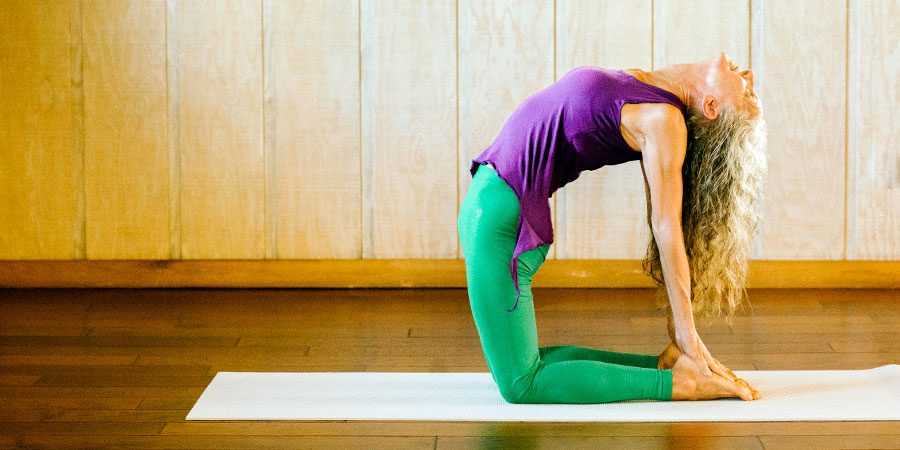
Additional Practices to Support Your Body
As you might imagine, the exercise itself isn’t all that matters. Any regular influences that help balance vata systemically can help support your overall sense of balance and can even serve to counteract some of the more aggravating aspects of exercise, ensuring that you reap the full benefits of being active.
Consider the suggestions below, and if you want more, please explore our resource on creating a vata-balancing daily routine.
Oil Up
Oil can be a powerful rejuvenative and—being unctuous, heavy, stabilizing, and smooth—is incredibly balancing for vata. Applied warm, an oil with a warming energetic (like Sesame Oil) also does wonders to counter vata’s cold nature.
There are many traditional Ayurvedic practices that capitalize on the soothing and nourishing influence of oil, all of which are very supportive of vata. Here are some ideas:
Oil the Scalp and Feet Before Bed. Though simple, this practice really can help calm the nervous system and ground one’s energy. It is also a natural way to support sound sleep. Consider using plain Sesame Oil, Sleep Easy Oil, or Brahmi Oil.
Massage Yourself with Oil. The ancient practice of abhyanga is incredibly soothing to vata, deeply rejuvenating for the tissues, and profoundly calming to the nervous system as a whole.
Our resource on Ayurvedic self-massage offers more information about this highly revered Ayurvedic practice, including suggestions for appropriate oils to use for different constitutions, imbalances, and seasons.
Practice Nasya. Nasya is the practice of applying an herbal oil such as Nasya Oil to the nasal passages, which has a very direct impact on the mind and the nervous system while delivering all the benefits of oil itself. If the practice of nasya is new to you, please see our helpful instructional video.
Love Your Joints
The joints are one of the main sites of vata in the body and are particularly vulnerable to imbalances caused by vata-provoking exercise. Offering your joints a little extra care can go a long way toward protecting them.
Try taking a few minutes to rotate the joints gently before and after exercise. In addition, you can apply a supportive oil or balm to heavily used joints as needed. Consider treating your joints to the soothing experience of a massage with Mahanarayan Oil or Joint Balm.
Pamper Your Muscles
The muscular system is inherently active during exercise and requires proper rest and recovery to maintain optimal health and integrity. You might consider offering your muscles a little extra care with regular massage, steam baths, Epsom salt baths, or with the application of soothing topical rubs like Muscle Balm.
Prioritize Rejuvenation
Ayurvedic rejuvenation is the process of offering deep nourishment to the tissues. Adding a rejuvenative to your daily routine can be particularly supportive in balancing the inherently lightening influences of exercise.
Consider taking a teaspoon of Chyavanprash or two Ashwagandha tablets each morning, about thirty minutes before breakfast. Or explore our rejuvenation department for additional ideas.
Quiet Your Mind
Anything you can do to settle the mind helps to balance vata. Consider lying in Savasana for a few minutes each day, committing to a few minutes of So-Hum Meditation, or practicing pranayama (yogic breathing exercises) daily. In particular, consider working with Full Yogic Breath, Nadi Shodhana (Alternate Nostril Breathing), or Bhramari Pranayama (Humming Bee Breath).
Embrace What’s Right for You
At the end of the day, Ayurveda is a tradition that encourages each of us to embrace our uniqueness. Your path toward balance should be appropriately tailored for what you need, who you are, and also what will work best for you.
Exercise is simply another area of our lives where we can use the wisdom of Ayurveda to support our overall health and well-being. If like increases like and opposites balance, there are countless ways to introduce balancing energies into our fitness routines (and our lives).
Your task is to find your way. Make this journey your own. Experiment with what speaks to and nourishes you, and celebrate this opportunity to bring more support and inspiration into your life.



